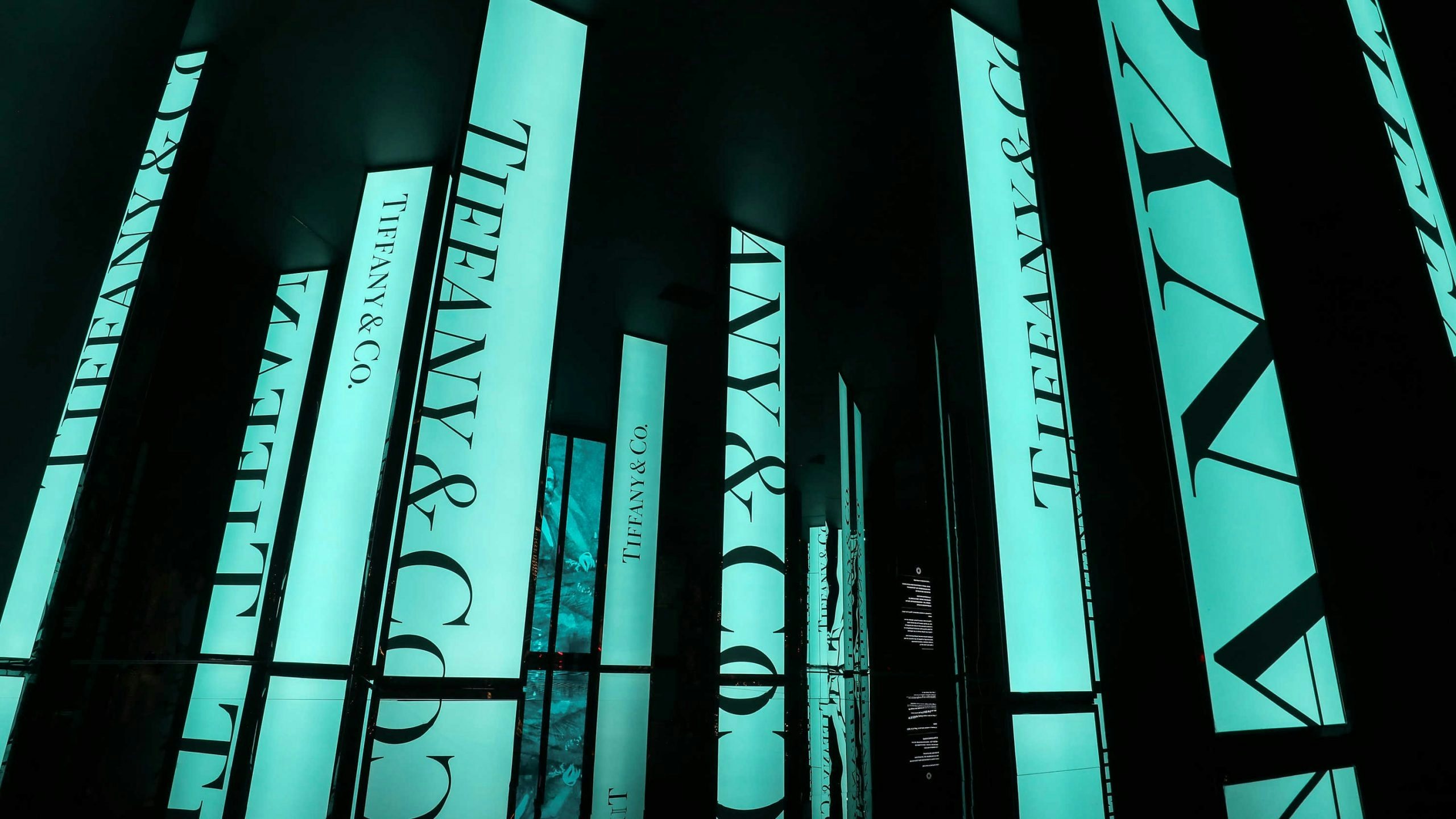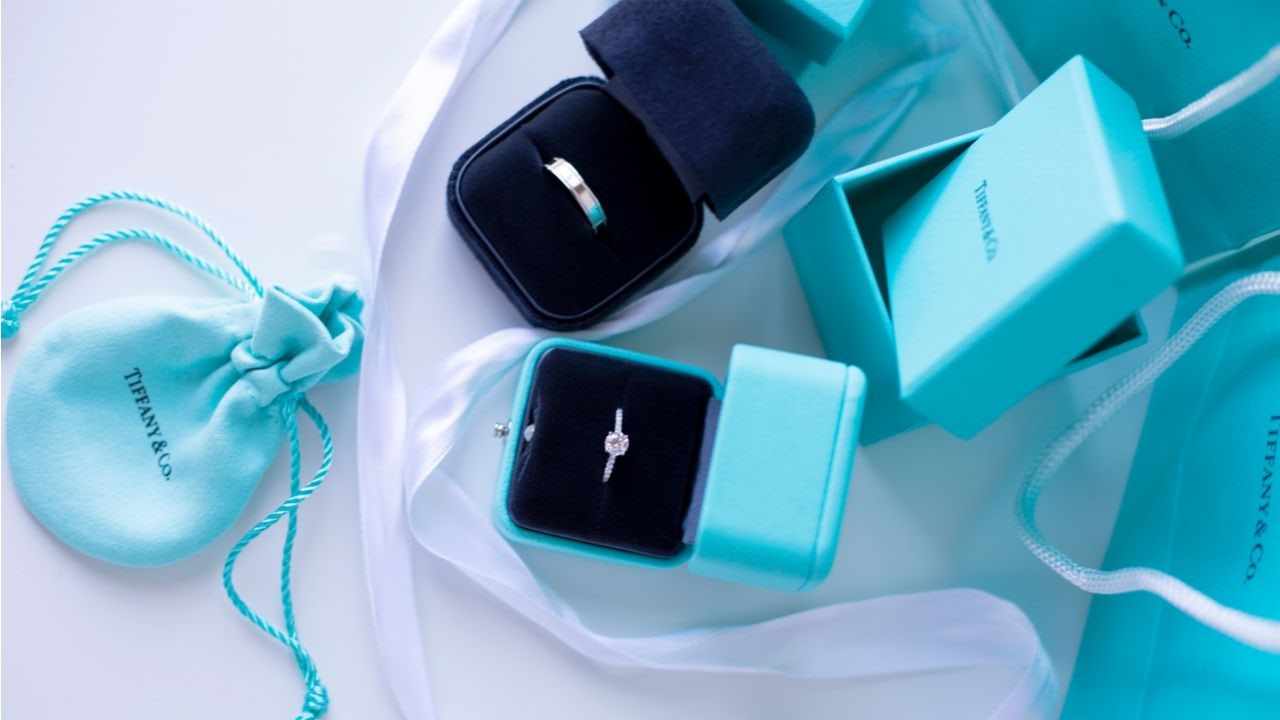Key Takeaways#
:
- Tiffany and LVMH may seem like a match made in heaven since both companies belong to “The Old Guard” of luxury, have a people-centric approach, and understand how to listen to their customers, but there are cultural issues at play.
- Tiffany has an impressive market share in Mainland China, and a recent UBS survey showed that Chinese buyers see Tiffany as a “go-to jewelry brand, second only to Cartier.”
- We can expect Tiffany to invest in the expansion of its physical retail footprint, continue to push art-and-luxury crossovers, and go through a brand relaunch.
Last month, the media announced that a merger between two luxury titans had finally concluded. After settling a very public battle, Tiffany & Co. and LVMH have agreed to a price cut of 425 million, green-lighting the biggest merger the luxury world has ever seen. Now, industry experts are wondering what’s in store for Tiffany & Co., with the French conglomerate having taken full control of the American brand.
In a 2007 article, Susanne Hilger wrote about “Globalization by Americanization” by arguing that highly-industrialized American companies had “prepared the way for globalization.” The writer also highlights how, in post-WWII Germany, domestic enterprises employed American know-how and management strategies to keep up with their American rivals.
During the twentieth century, American companies were a symbol of entrepreneurship, industrialism, hard work, and trust. But the situation changed in the early 2000s when constant scandals stained the global vision of American capitalism. Various corporate scandals included fraudulent accounting methods, unethical behavior from executives, corruption, moral violations by employees, business ethics abuses, and managerial errors. Accordingly, the global audience stopped seeing American companies as beacons of success and leadership. And just as the world turned away from America, some European powers began promoting Eurocentrism.
As such, it will be interesting to see how two proud-yet-incompatible cultures from France and the US can come together and promote intercultural dialogue. In fact, the Harvard Business Review highlighted how cultural incompatibility is a big reason why mergers fail. And although Tiffany and LVMH might seem like a match made in heaven at first sight — both belong to “The Old Guard” of luxury, have people-centric approaches, and understand how to listen to their customers — the reality is far more complex.
All LVMH fashion, leather, watches, and jewelry brands are European, except for the Australian boots brand R. M. Williams that LVMH agreed to sell to the private equity group Tattarang this October. And even though LVMH owns brands like Ao Yun and Benefit Cosmetics and partnered with Rihanna for her Fenty Beauty line, the group remains a quintessentially Western European company, and, above all, the epitome of the French culture.
But one thing that both sides of this merger have in common is an interest in expanding their businesses in China. Tiffany has an impressive market share in Mainland China, and a recent UBS survey showed that Chinese buyers see Tiffany “as a go-to jewelry brand, second only to Cartier.” Furthermore, Tiffany’s operating earnings for August and September of 2020 indicate that the Tiffany T1 line performed well in China, and CEO Alessandro Bogliolo’s ambitious China growth strategy has been a continuous success thus far.
With its “Vision & Virtuosity” exhibition in Shanghai, Tiffany pulled a page from LVMH’s playbook, as the French conglomerate is a pioneer in supporting artists, regularly engaging in partnerships with museums and art foundations.
The opening of its Blue Box Café in Shanghai is also in line with LVMH’s strategy of experiential retail. In fact, last February, Louis Vuitton opened Le Café V in Osaka last February along with a restaurant called Sugalabo.
Additionally, both players moved further away from the traditional luxury buyer by chasing the new luxury demographics of affluent millennials and Gen Zers. In an interview with CNN Business, Tiffany & Co. CEO Alessandro Bogliolo said that “80 percent of consumers of luxury in China are millennials.” As such, his recent efforts are concentrated on attracting a demographic that values brand recognition, in-store technology, and personalized designs.
Since taking the helm of the company, Bogliolo has further embraced technology with the launch of the brand’s Chinese e-commerce platforms, which are focused on brand design (with the debut of the T1 collection) and have expanded Tiffany’s market share in Asia-Pacific.
What should Chinese customers expect from the merger?
With an infusion of capital and savoir-faire coming from LVMH, we anticipate that Tiffany will invest in the expansion of its physical retail footprint. Tiffany won’t be present everywhere, but strategic store openings in lower-tier cities are likely to happen. “If this acquisition can speed Tiffany’s entry into the massive China market, everyone wins,” said Cathy Hotka, Principal, Cathy Hotka & Associates to RetailWire.
Also, it is expected that Tiffany will continue to pursue a marketing strategy focused on emotional experiences and exhibitions. Blurring the boundaries between art and luxury is a tactical move that will help the American brand communicate its heritage and legacy to a new generation of consumers.
Lastly, a possible brand relaunch might be in the cards. When LVMH acquired a majority stake in Rimowa, the French conglomerate came up with a new visual identity and voice for the German luggage manufacturer.
If history can teach us anything, it is that Bernard Arnault is not afraid of taking risks with his brands.

